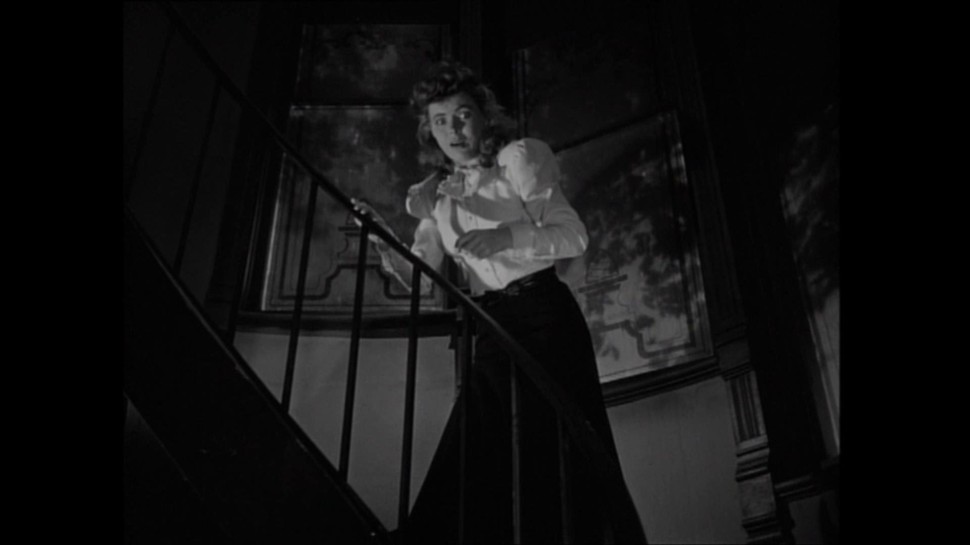That famous quote by the 19th century French poet and critic Stéphane Mallarmé has no doubt been a prophetic motto for many a storyteller and screenwriter:
‘To Define is to kill… To suggest is to create’.

As much as film has been about telling a story through moving images, so too has it also been about it’s clever usage or indication of alluding to elements of plot through what the audience does not see – those themes, instances and occurrences that the filmmaker suggests.
We must never assume the audience is stupid. If they can foresee what is indeed around that corner then they most probably won’t want to sit it out in the cinema for the duration.

In the decade of the 40’s, filmmakers like Hitchcock, Wilder, Siodmak, Huston and Hawks were etching out their own paths and redefining cinema history with their techniques of story development and character analysis.
Film noir was at the forefront, sometimes carrying elements of melodrama and fatalism, isolation and psychological thriller.
The Spiral Staircase (1946)
Based on the novel Some Must Watch by Ethel White and adapted to the screen by Mel Dinelli is Robert Siodmak’s murderous thriller noir The Spiral Staircase.

Siodmak had certainly proved his worth as a prolific and stylised filmmaker of gritty Noir with the likes of Phantom Lady, Christmas Holiday and The Strange Affair Of Uncle Harry, but it was with The Spiral Staircase and his retelling of Hemmingway’s The Killers a year later that would stamp his certification as a bona fide master of the shadows.
The story is set in 20th century New England in a large lodge house owned by the wealthy bed-ridden Mrs Warren (Ethel Barrymore of the famed Barrymore family) and centered around Helen (Dorothy McGuire), a vulnerable young mute girl who tends to Mrs Warren.
We watch with utter horror as an unknown psychopath brutally picks off young women in the community… the suspects coming thick that frequent the old lodge house and pass through the shadows of the winding spiral staircase.
Robert Siodmak himself is said to have played the stalker in the woods, and it is his own piercing eye that watches on from the closet. It’s disturbing plot line has transcended the decades and been remade in 1975 with Jacqueline Bisset, and again in 2000 for a television audience starring Nicollette Sheridan.
The 7th Victim (1943)

‘I runne to death, and death meets me as fast, and all my pleasures are like yesterday…’
When RKO Pictures signed screenwriter and producer Val Lewton at a salary of US$250 per week their conditions were specific: no film made should exceed it’s US$150,000 budget, each film would run under 75 minutes, the film titles would be supplied by Lewton’s superiors.
In fact, from the beginning it became starkly apparent that the studio’s resources and patience had worn thin after Orson Welles... they sought a quick return from B-grade movies as opposed to ambitious efforts from another auteur.

What the world got in return was artistic ingenuity under the guise of a parsimonious hero. For Val Lewton he would play on our biggest fears of all: the unknown element of shadows.
The 7th Victim is a superbly crafted and utterly dark horror Noir starring Kim Hunter (in her first film), Tom Conway and the knockout Jean Brooks as the elusive sister who seems to be greeting her early death with open arms.
Indeed most of the dimly-lit sets and shadowy locations were used to get around Lewton’s shoe-string budget and restricted parameters. It wouldn’t be due to coincidence if some interior shots of the board house and stairwell were familiar… they were from Orson Welles’ The Magnificent Ambersons set.
Lewton was also a fierce loyalist, and he would entrust his editor on previous films like Cat People and I Walked With A Zombie, Mark Robson to grace the director’s chair for this film.
Ladies In Retirement (1941)

Based on the 1940 Broadway play of the same name and starring the multi-talented Ida Lupino is Charles Vidor’s underrated creepy noir classic Ladies In Retirement. A clever psychological horror that takes delight in weaving it’s subtle web of unnerving elements and layers of intrigue.
For Vidor, the gamble payed off brilliantly when he cast a 23 year-old Lupino for the role of Ellen Creed, the financially troubled housekeeper that brings her 2 mentally unstable sisters to stay at wealthy retiree Miss Leonora Fiske’s abode (The character of Ellen Creed was in her 40’s in the Broadway production). With a prowess that is beyond her years, Lupino plays both protagonist and antagonist in a character that we are both paradoxically sympathetic and sickened by. For her, caring for her 2 peculiar sisters is an obligation that she will go to murderous lengths to fulfil.

Ladies In Retirement surges boldly toward it’s twisted, psychological climax as the handsome opportunist Albert (played by Louis Hayward) has the maid play the missing landlady’s old grand piano dressed in her wig as a horrified Ellen screams from the stairwell and faints.
The Victorian costume design, along with George Barnes’ moody black and white cinematography along the foggy moors gives the film it’s haunting gothic and melodramatic appeal. Remade in 1969 as The Mad Room, this classic psychological piece is often overlooked by a generation seeking faster and cheaper thrills.

